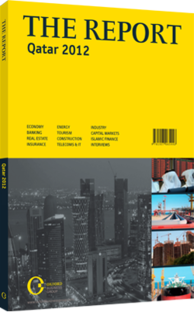Interconnected: Trends in trading activity
Highlighting Qatar’s importance to major multinationals as well as regional and local businesses, a recent report from HSBC predicts that the country’s trade volume could surge by up to 160% by 2025. This is within the context of projected growth in the Middle East and North Africa region by 84.7% by 2025, which is higher than the expected global average of 73%. The report forecasts that global trade volumes will grow by $1trn a year between now and 2015. Qatar is well-placed to benefit from this surge in trade activity as it establishes a firm foothold in global markets, with exports hitting QR272.27bn ($74.77bn) and imports amounting to QR76.21bn ($20.93bn) in 2010, according to the Qatar Statistical Authority. Exports are dominated by oil and gas and related products, but non-hydrocarbons exports grew by 38% to QR26.95bn ($7.4bn) in 2010, following a decline in the previous year.
CONFIDENCE: Global firms are rushing to position themselves to take advantage of opportunities within the Gulf region. HSBC, for example, has committed to facilitate $750bn of world trade by 2013. Drawing on findings in the HSBC Trade Confidence Index, the bank reports that “despite a dip in global trade confidence, the majority of respondents (84%) anticipate either an increase in international trade, or consistent levels of international business activity, over the next six months.” The Ministry of Business and Trade is responsible for developing and implementing policy for private and public enterprise to help develop the country’s regional and international trade relations. Through its various units the ministry seeks to “integrate Qatar into the international business community; support and promote local and foreign investment; and promote the employment of Qataris, particularly in the private sector”. According to Nassir bin Abdulla Al Humidi, the acting minister of labour, “We have seen an increase in the number of Qatari nationals working in the private sector. This is very much down to the efforts of both the ministry and the private sector to engage with each other and cooperate to achieve a common objective.”
FOREIGN PARTICIPATION: Indeed, promoting investment is an important step in expanding trade, and while the hydrocarbons sector remains the primary source of exports, this could start to slowly change as the government encourages foreign direct investment (FDI) into the broader domestic economy. Most sectors of the economy still require majority ownership by local firms, but the government is taking steps to ease these restrictions, particularly in the health, agriculture, tourism, mining, education and service sectors. Qatar provides a wide range of incentives to investors. Sectors open to foreign investment include: agriculture, industry, health, education, tourism, development and exploitation of natural resources, energy and mining, consultancy services, technical work services, IT, cultural services, sport services and entertainment services. Restrictions on the level of foreign ownership apply in most sectors, however, foreign ownership can be up to 100% for firms operating in places such as the Qatar Financial Centre and the Qatar Science and Technology Park.
INDUSTRIAL INVESTMENT: One important area of foreign investment is industry, with industrial cities forming centres for trade. Most manufacturers focus on exports, Mohamed Jaidah, the chief development officer at local conglomerate Jaidah Group, told OBG. “Qatar has a small population and therefore limited demand for industrial goods, but local manufacturers are well-positioned to serve the wider regional market,” he said.
Industrial centres in Qatar include the Ras Laffan Industrial City, where Qatar Petroleum has its main liquefied natural gas (LNG) facility. Ras Laffan is one of the largest LNG export facilities in the world. Mesaieed is another focal point for trade in the country, housing oil refineries and treatment plants, LNG production sites and companies. Other industrial areas include Dukhan Petroleum City and Doha Industrial Estate, which serves light and medium-scale industries. The development of the country’s industrial base should help ensure that a growing share of Qatar’s exports will be accounted for by the non-hydrocarbons sector.
You have reached the limit of premium articles you can view for free.
Choose from the options below to purchase print or digital editions of our Reports. You can also purchase a website subscription giving you unlimited access to all of our Reports online for 12 months.
If you have already purchased this Report or have a website subscription, please login to continue.

